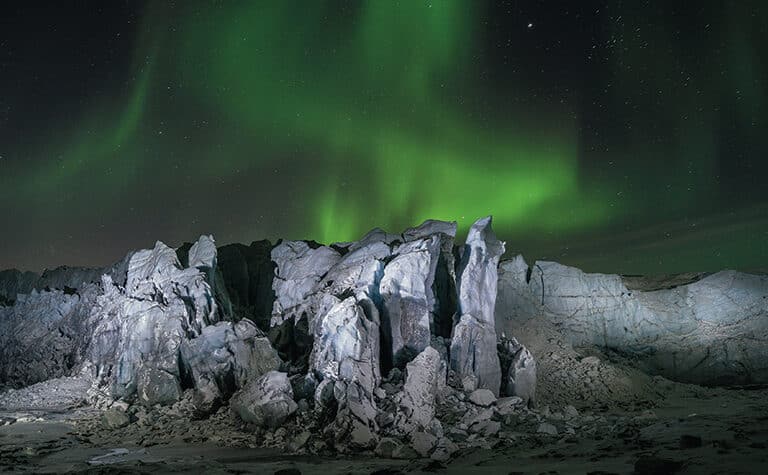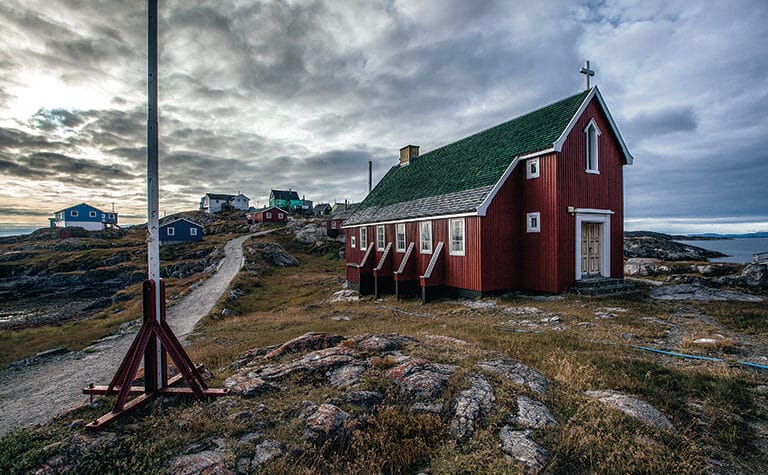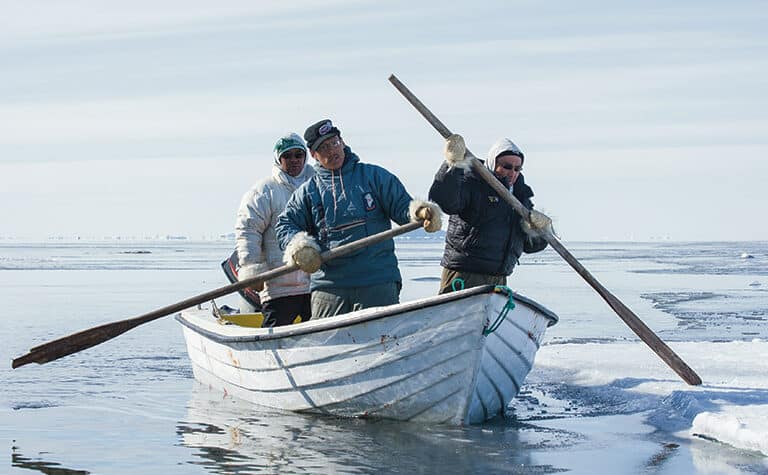
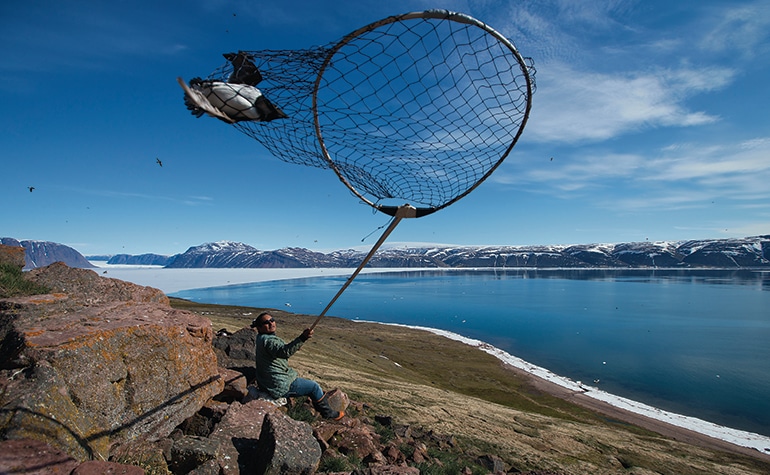
The little auk harvest of Thule
Published: 12/04/2017
Reading time: 4 minutes
Text & photos: Carsten Egevang
Article from the former magazine, Greenland Today
The images in this article is shot by Carsten Egevang, and is part of a joint project between Iceland, the Faroe Islands and Greenland to communicate the biological and cultural importance of seabird harvest.
The little auk is a tiny-sized, black-and-white seabird restricted to inhabit the most harsh and remote areas of the high-Arctic zone. But what the little auk is missing in body size and colorful plumage it compensates for with its enormous numbers of individuals at the breeding site. The colonies of the little auk often exceed hundreds of thousands – even millions in some places – individuals. The Thule area in North Greenland is the core distribution area of the little auk with more than 80% of the world’s population found here. Here a unique form of seabird harvesting takes place and a very special local dish – the Kiviaq – is prepared.
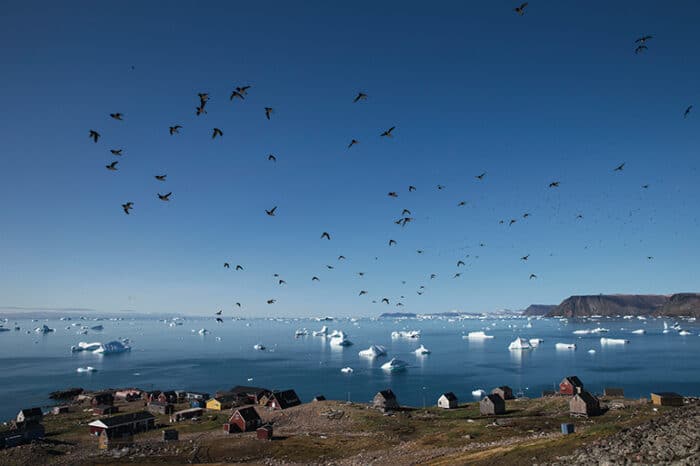
Birds by the millions
The little auk is found in the Thule area in the northern part of Greenland during the short and hectic Arctic summer where they come to breed. The birds arrive from the southern winter quarters in May and leave again around September. In this period the colonies become alive with birds and the sky over the colony is painted black by the many birds. The high number of birds gathered in the same place results in high numbers of bird droppings added to the environment close to the colony. The fertilizing effect of bird excrement makes the surroundings of the little auk colony appear lush and green in an otherwise barren and nutrient-poor environment. This phenomenon is beneficial to the grass-eating Arctic mammals and often high densities of musk oxen, reindeer, and polar hare are found close to little auk colonies.
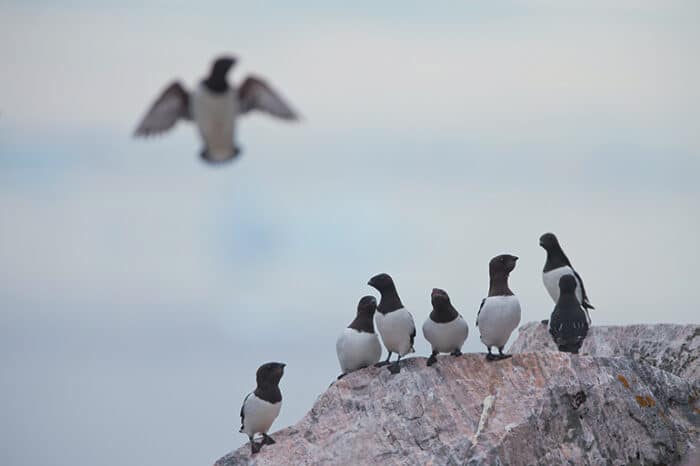
The total population of little auks in the Thule area is estimated between 30 and 60 million pairs. This high number of birds can only be supported by an extremely high productivity in the marine environment – and this is what the North Water polynya provides. Local currents and wind systems keep the polynya ice-free throughout the winter and by the onset of spring, productivity is many times higher compared to ice-covered areas. An extraordinarily large bloom of ice algae is followed by trillions of tiny copepods – the principal prey species of the little auk – and for a short period of time food is abundant.
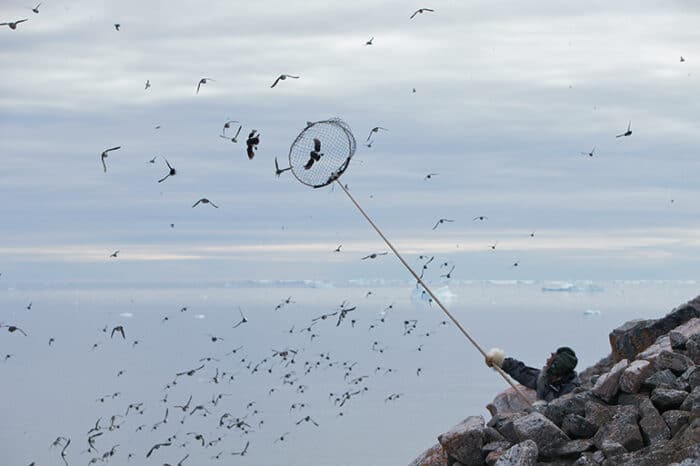
Kiviaq
The little auk has always been important to the local human inhabitants of Thule. It is likely that the small bird with a mass of only 150 gram has been the very core of survival in this harsh and unforgiving environment. However, the enormous number of birds has only been available to the Inuit for a limited period of time during the year. Preserving and storing the little auks has been necessary in order to make the food last through scarce times with poor hunting. The kiviaq is prepared by removing the bones and meat from a freshly shot ringed seal (Pusa hispida) but leaving the blubber attached to the skin. The seal is then stuffed with 300 to 500 little auks and stored under a pile of rocks for a period of 3 to 6 months. Under low temperatures, the blubber of the seal starts a fermentation giving a strong and ripe taste to the birds.

Today, hunting for the little auk is still important in the Thule District. The birds are caught in the colonies using a catcher (pole net). The harvesting of the little auk is an activity everybody participates in. Where most other hunting in Greenland is carried out by male hunters, little auk harvesting is done by both men and women – old, young, and children. Most of the birds today are eaten after cooking, but some are still used for making the traditional kiviaq. Today the kiviaq is treasured not so much for storage but is considered a delicacy saved for important celebrations such as confirmation, weddings, and the annual National Day. It is a strong-tasting dish and the loose meat of the birds resembles a mixture of really strong cheese and licorice.
Read more articles from Guide to Greenland
-
VIP tour for 4 people!

Helicopter and Ice cave tour | East Greenland
Tour startsKulusuk TasiilaqDuration2 hoursFrom 41900 DKKSee more -
Tailored for US flights
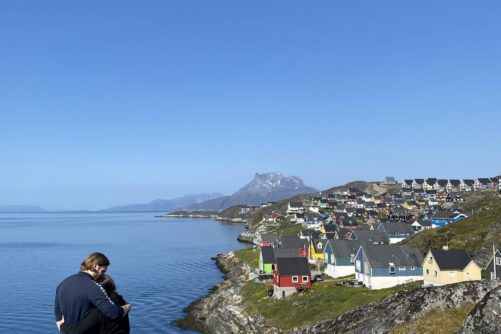
Arctic Blend: Wilderness Camping, Fjords Adventures & City Life | 6 Days in Nuuk
Tour startsNuukDuration6 daysFrom 14400 DKKSee more -
5.00(3)Driver included!
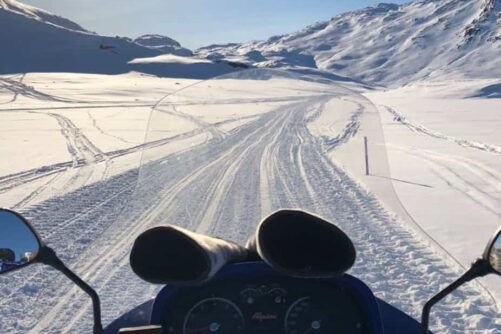
Snowmobile tour to UNESCO viewpoint | Ilulissat
Tour startsIlulissatDuration2 hoursFrom 1750 DKKSee more -

Musk Ox, Reindeer & Ice Cap Tour | Kangerlussuaq
Tour startsKangerlussuaqDuration25 minutesFrom 1450 DKKSee more -

Iceberg cruise & Ice cave exploring | Tasiilaq | East Greenland
Tour startsKulusuk TasiilaqDuration6 hoursFrom 5200 DKKSee more -

3 Day Glacier Adventure | Kangerlussuaq
Tour startsKangerlussuaqDuration3 daysFrom 7995 DKKSee more -
5.00(1)

Private Kayak Tour in Ilulissat Icefjord from the boat | Ilulissat
Tour startsIlulissatDuration2 hoursFrom 1750 DKKSee more -
5.00(1)1 To 6 Passengers Included

Private Catch’n’Eat | Qooqqut Nuan | Nuuk
Tour startsNuukDuration6 hoursFrom 14500 DKKSee more -
Flights included!

Hike and Kayaking | 10 days | South Greenland
Tour startsFrom IcelandDuration10 daysFrom 26500 DKKSee more -
5.00(3)

Ghost Village Boat Cruise | Sisimiut | West Greenland
Tour startsSisimiutDuration3 hoursFrom 1040 DKKSee more -

Boat tour among icebergs | Tasiilaq | East Greenland
Tour startsTasiilaqDuration2 hoursFrom 1100 DKKSee more -

Ice fishing | Uummannaq | North Greenland
Tour startsUummannaqDuration5 hoursFrom 2000 DKKSee more -
2026 dates!

East Greenland Adventure | 6 Days
Tour startsKulusukDuration6 daysFrom 17800 DKKSee more -
Price for 4 people!

Best of South Greenland by Helicopter | Qaqortoq | South Greenland
Tour startsQaqortoqDuration3 hoursFrom 36800 DKKSee more -
Authentic experience!
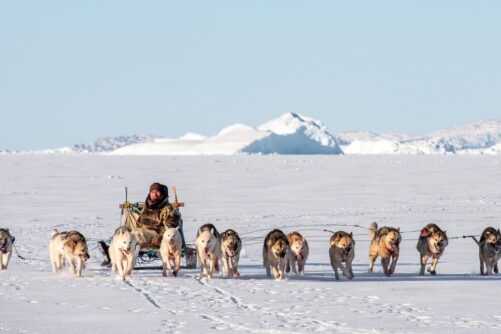
Expedition on Dogsled | 2 Days | Ilulissat
Tour startsIlulissatDuration2 daysFrom 10700 DKKSee more -
5.00(1)

UTV Glacier Expedition | Ilulissat – Ilimanaq | Disko Bay
Tour startsIlulissatDuration8 hoursFrom 3995 DKKSee more -

10 days of hiking through Arctic nature & villages | East Greenland
Tour startsFrom IcelandDuration10 daysFrom 39700 DKKSee more

